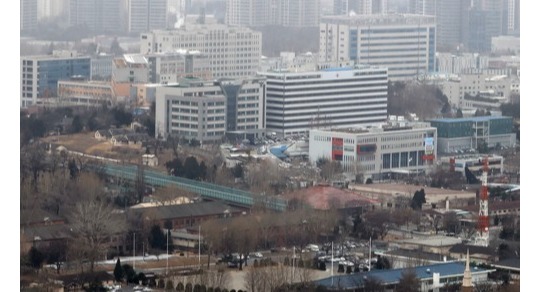The defense ministry said Tuesday it seeks to spend nearly 350 trillion won (US$266 billion) over the next five years to maintain and strengthen defense capabilities, including the military's "three-axis" deterrence system against North Korea's military threats.
The ministry announced the mid-term defense blueprint for 2024-2028 as Seoul seeks to bolster its defense capabilities against North Korea's evolving military threats, recently highlighted by the launch of its first military spy satellite last month.
The blueprint features various de

fense reinforcement schemes, such as acquiring military reconnaissance satellites, deploying more submarines, advanced missile interceptor systems, and developing electromagnetic pulse (EMP) shells.
During the five-year period, the ministry seeks to spend a total of 348.7 trillion won -- 113.9 trillion won for improving defense capabilities and 234.8 trillion won for maintaining troops, equipment and facilities.
It aims to increase the country's annual defense budget, which stood at 57 trillion won this year, to 59.6 trillion won for next year, 64.3 trillion won for 2025, 70 trillion won for 2026, 74.8 trillion won for 2027 and 80 trillion won for 2028.
Over the period, the average annual increase rate of defense spending amounts to 7 percent. A defense spending plan is subject to parliamentary approval.
The blueprint contains various schemes focusing on securing deterrence capabilities under the military's three-pronged system, which consists of the Korea Massive Punishment and Retaliation, an operational plan to incapacitate the North Korean leadership in a major conflict; the Kill Chain pre-emptive strike platform; and the Korea Air and Missile Defense system.
They include acquiring five military reconnaissance satellites by 2025, completing deployment of tactical surface-to-surface missiles designed to destroy hostile tunnel targets, and starting deployment of the KSS-III Batch-II submarines, which will be able to carry more submarine-launched ballistic missiles than the first batch.
It also plans to acquire more advanced stealth fighters and develop new advanced weapons systems, such as suicide drones and EMP shells designed to neutralize the enemy's electronic equipment.
As part of efforts to establish a multilayered missile defense system, the ministry seeks to complete the deployment of the Cheongung-II medium-range surface-to-air missile (M-SAM) system and the long-range surface-to-air missile (L-SAM) system by 2028.
It also seeks to begin development of the improved M-SAM-III and the L-SAM-II systems in the next five years.
On the force structure, the ministry plans to keep the number of active-duty military personnel at the current level of 500,000 amid concerns over a decline in personnel resources due to the country's low birthrate.

